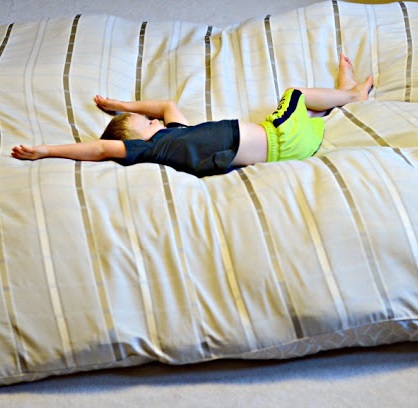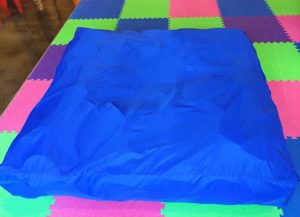Sensory Crash Pad Activities
This article provides sensory crash pad activities to help kids with proprioception and calming.
We’ve talked about the benefits of having a sensory crash pad in your home. Now it’s time to talk about what activities your child can do with a crash pad. Remember, the importance of having a sensory crash pad at home is to help your children build their motor planning skills, which leads to better focus and attention in the classroom so our goal is to continue prepping our kids for higher learning.
Activities like these can help calm children, especially if they have anxiety or need that sensory touch to help them concentrate and listen to the teacher in school. It also organizes the brain for classroom projects and strengthens their core muscles.
Your kids can use crash pads in many fun ways at home. Try some of these:
- For the first exercise, you can do this with your kids if you have a swing set in your backyard or it’s just as easy at a local park. Place the crash pad in front of the swing and let the child launch themselves from the swing onto the crash pad. Kids love jumping directly into the sensory crash pad from swings.
- Another great activity is to use a small home trampoline to crash into the crash pad. Kids have many different choices with the trampoline. They can run and jump right into the crash pad or they can hop on the trampoline and then dive into the crash pad. Let the kids be creative and have fun.
- Leap Frog: Have your children leap from a couch or a bed onto the pad.
- Roll Over: Have your kids roll back and forth on the crash pad. Rolling is great for many reasons. First, they get that sensory stimulation they need as they roll on the crash pad. This is very therapeutic. However, it also helps their hand-eye coordination for reading, writing and spelling.
- Run and Jump: If you don’t have a trampoline at home, just have your child run and jump into the crash pad. This keeps them entertained for hours and they can even invite friends over to try it out as well.
- Push and Pull: Make a game out of pushing and pulling the crash pad around your house. You could even have a small sibling sit in the crash pad while your older child pushes or pulls their sibling around. Why is this a good exercise? The crash pad is designed to help calm your child’s brain, especially if they struggle with sensory issues or a learning challenge. This allows them to focus and release all the energy they have pent up for their sensory input and output. Just as exercise is to adults, the workout your child gets with the heaviness of the crash pad releases tension, anxiety, and frustration
- Hide and Seek: Hide your child’s toys under the crash pad and have them lift and go under the crash pad to get them. Again, the heaviness of the crash pad and the weight down on top of their body provides them with a sense of security and protection. This is good for any child, but especially for those with autism, ADHD and Sensory Processing Disorders.
Posted in ILS learning

